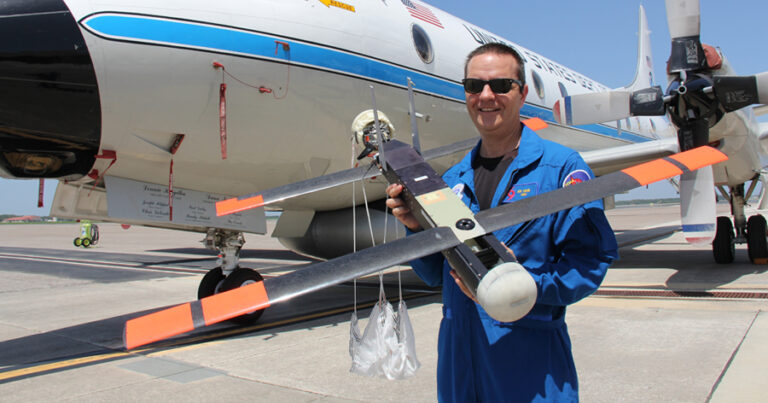A new type of disposable drone has been developed to enable scientists to collect detail observations of hurricane winds that occur just above the surface of the ocean, near the eyewall of a storm.
Scientists have flown the Coyote drone into hurricanes Maria and Michael – two of the most powerful Atlantic basin hurricanes on record. The unmanned aerial system (UAS) measured atmospheric conditions as low as 360ft above the water and winds of up to 194mph.
A new paper by a team of scientists, led by the National Oceanic and Atmospheric Administration (NOAA) and National Center for Atmospheric Research (NCAR), demonstrates that such observations can improve the performance of hurricane models used by forecasters.
“We have an instrument to collect data that we’ve never been able to collect before,” said NCAR scientist George Bryan, a co-author of the new paper. “This is a new frontier in measuring the atmosphere.”
The observations will enable scientists to determine the extent to which the gusts shift and fluctuate, which can have significant implications for hurricane behavior as well as the potential for damage once the storm moves onshore.
Bryan said the drone’s measurements may also help answer a longstanding question about the interplay of hurricane winds and the ocean surface. Strong winds typically whip up ocean waves, which then exert a drag on the winds that can slow them down. Some evidence, however, indicates that hurricane-force winds cause waves to break in a way that would not exert such a drag, as well as stirring up so much froth that the water surface essentially has a lubricating effect.
“With the drone, we can get direct measurements of these processes for the first time,” Bryan said. “These data are crucial to help us configure our models to produce better simulations and forecasts.”
The new paper, Eye of the Storm: Observing Hurricanes with a Small Unmanned Aircraft System, is available online here.



